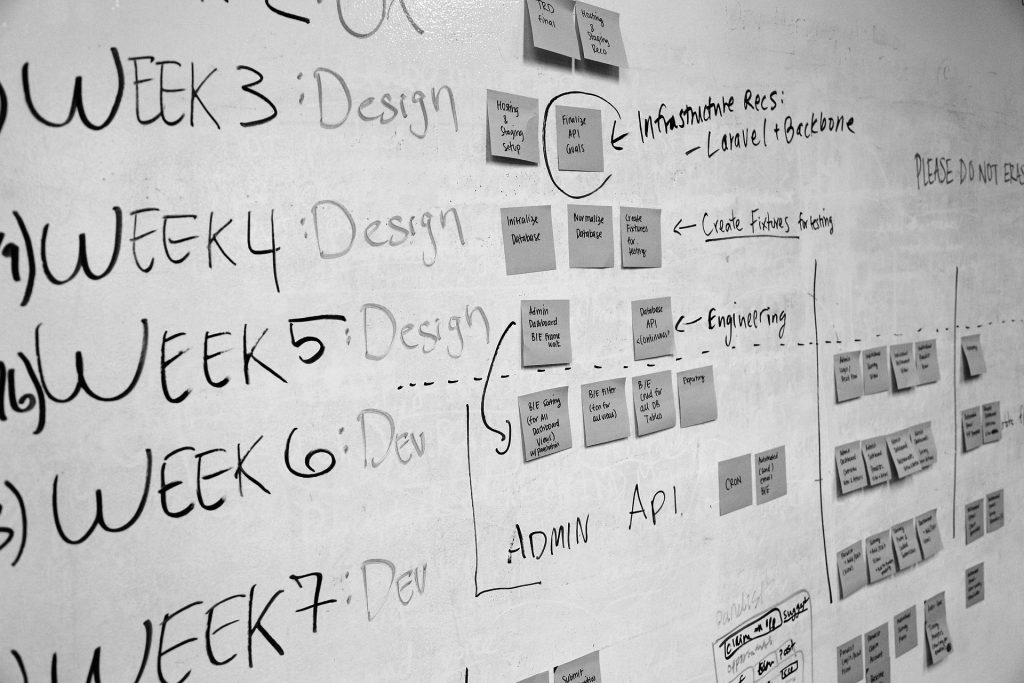In the not too distant past, we earned most of our revenue doing professional web design and development. Over the course of 10 years we built over 300 web sites for over 100 companies. And while we eventually went on to develop Intervals — our project management software for web design agencies and other small businesses — we almost didn’t. One those web projects went pear shaped, and almost took our company down with it.
Starting a business is hard. Keeping it going is even harder. Did you know that 7 out of 10 businesses fail within 10 years? We almost became a statistic, and not a good one.
Time tracking and task management in the early days of the web
We started our agency in the year 2000, at a time when there weren’t any viable options for web design project management software. So we did what any agency like ours would do, we cobbled together a halfway decent app for managing tasks, and tracked our time using paper timesheets and Excel.
Our solution worked for the most part — as long as we stayed on top of our tasks and regularly copied our paper timesheets into Excel, and then copy that data into QuickBooks for invoicing clients. Unfortunately, it didn’t take much to knock us off track. As every agency has experienced, projects come in waves as agencies go through periods of feast or famine. It’s during those busy times we need reliable project management workflows the most.
During one such period of heavy projects, we found out the hard way that our project management workflow was unreliable. There was one project in particular that looked great on paper. It was a big client and the work would look great in our portfolio. Everyone was excited to do the work and we worked hard for months to deliver it on time.
In our enthusiasm to land a big name client, we overlooked problem areas that a better project management system would have caught earlier on. Specifically, we would have had better visibility into how changes in the project scope would have affected the overall outcome. And we would have adjusted our estimates and billing to compensate for the changes.
After delivering the project, we tallied up our hours and paid our subcontractors, only to discover that we had made zero profit. And when we went back to the client to ask for more money, they said no. The contract had been for a flat fee and the project was over.
Paving a new path with web design project management software
We learned two important lessons. First, we could no longer do flat fee projects for custom web site development. The work was simply too unpredictable to scope out before any of the work began. We would only work under time and material contracts going forward. And, second, we needed to manage our tasks and track our time with one piece of software so we could gauge project health in real time, not after the project was over. We could not afford to have another experience like that one.
We devoted every minute of our free time to developing web design project management software that integrated time tracking and task management with detailed reporting. And after a few months of working on it, we rolled it out to our clients and started using it to manage their web design projects.
The difference was immediately noticeable. We had all the data we needed at our fingertips and could instantly run reports to gauge project health. We knew exactly where every project stood at any moment. And when projects began to drift in the wrong direction, we could quickly steer them back. Not only did we keep projects on track and under budget, our clients loved the reports and appreciated having more control of their budget.
We no longer had to waste hours of our time inefficiently filling out paper timesheets and organizing Excel spreadsheets. Time and task data were updated daily, if not hourly, and the quality of data was better. We experienced clearer insight and increased our billable hours.
Moving forward on the path of profitability
Web design project management software made us the good guys, because we could communicate back to the client at any time during the project. Changes in scope were caught early on and we could update our estimates accordingly. In fact, the ability to change scope midway through a project became a benefit to our clients, who’s business goals would often change as the web site was being developed. We could pivot with them, instead of trying to lock everyone in to a stale project scope.
Having clear insight into every moving part of a moving project kept our agency and our clients in clear and constant communication. And we never lost money on a project again. Ever.




